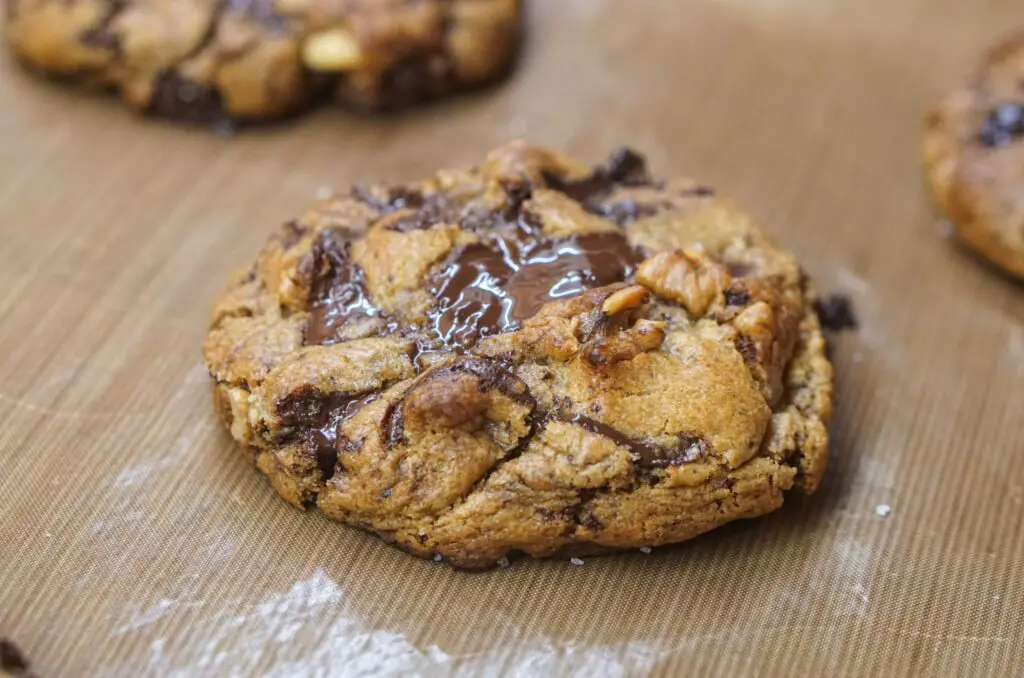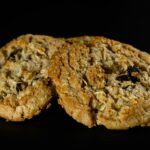Think gluten-free cookies can’t possibly taste good? Think again.
More people are baking without gluten these days—some for health, some for preference, and some just to try something new.
But no matter the reason, nobody wants a cookie that feels like cardboard.
Here’s the good news: gluten-free cookies can be soft, chewy, and packed with flavor.
In fact, the recipes you’re about to see are so good, even your gluten-loving friends will be asking for seconds.
Why Go Gluten-Free?
Health Needs Come First
For some, gluten-free baking isn’t just a choice—it’s a necessity. People with celiac disease have to avoid gluten completely because even tiny amounts can cause serious health issues.
Others have gluten sensitivities or intolerances that leave them feeling bloated, tired, or uncomfortable after eating wheat-based foods.
In these cases, baking without gluten isn’t a trend; it’s a way to enjoy cookies without the pain or side effects.
A Lifestyle Many People Choose
Even if you don’t have a medical reason, you might still choose to go gluten-free. Some do it because they feel lighter and more energetic.
Others simply enjoy experimenting with new ingredients and flavors. Think of it as swapping out the same old recipe card for one that adds a bit more variety to your kitchen adventures.
More Than Just Restrictions
The beauty of gluten-free baking is that it opens the door to different ingredients you might never have tried otherwise.
Almond flour gives cookies a nutty richness. Oat flour adds a hearty texture. Coconut flour brings a light sweetness.
Each flour has its own personality, and when combined properly, the results can outshine standard wheat-based cookies.
Flavor Isn’t Going Anywhere
Here’s the part many people get wrong: gluten-free doesn’t mean taste-free. Done right, your cookies can be just as chewy, crisp, or gooey as the classics.
With the right mix of flours and a few smart tricks, you won’t miss the wheat at all.
In fact, you may find yourself preferring the gluten-free version—it’s like discovering a secret upgrade you didn’t know you needed.
Essential Gluten-Free Baking Tips
Choose the Right Flour Blend
The heart of gluten-free baking lies in the flour. Wheat flour brings elasticity and structure, but when you remove it, you need a smart replacement.
Almond flour is rich and slightly nutty, giving cookies a tender crumb. Oat flour adds a wholesome, chewy bite—just make sure your oats are certified gluten-free.
Rice flour is light and crisp, great for cookies that need a delicate crunch. Coconut flour is super absorbent, so a little goes a long way, but it brings natural sweetness.
If all of this feels overwhelming, don’t worry—many store-bought gluten-free blends are carefully balanced to mimic wheat flour and make baking a lot easier.
Don’t Forget the Binders
Gluten is what holds dough together. Without it, cookies can crumble like sandcastles at high tide. That’s where binders step in.
Xanthan gum is a popular choice and helps mimic gluten’s stretchiness. Ground flaxseed or chia seeds mixed with water make a “gel” that works like an egg substitute.
Eggs themselves are a natural binder and add richness.
The key is knowing that one binder doesn’t fit all—sometimes you’ll need a little trial and error to see which works best for your recipe.
Tricks for Perfect Texture
Texture can make or break a cookie. If your dough feels sticky or loose, chilling it before baking helps prevent cookies from spreading too much.
Always measure flour accurately—scooping straight from the bag can pack in more than you need and lead to dry results.
Balance is everything: too much liquid and the cookies fall apart, too little and they’re tough. Don’t be afraid to adjust slightly as you go—gluten-free baking is more forgiving than it looks.
Tools Worth Having
A few handy tools can save you from cookie disasters. A digital kitchen scale ensures precise flour measurements, which are critical in gluten-free baking.
Parchment paper keeps cookies from sticking and helps with even baking. Silicone spatulas are great for scraping down sticky dough.
And an airtight container is a must—gluten-free cookies can dry out faster than wheat-based ones, so storing them properly keeps them soft and fresh.
Classic Gluten-Free Cookie Recipes
1. Chocolate Chip Cookies
There’s nothing more classic than a chocolate chip cookie. The goal? Soft and chewy in the middle with those golden, slightly crisp edges.
Gluten-free doesn’t change that—it just makes the flour swap more interesting. Using a mix of almond and rice flour gives the cookies structure without sacrificing flavor.
Almond flour adds richness, while rice flour keeps them from getting too dense.
Recipe
- 1 cup almond flour
- 1 cup rice flour
- ½ tsp baking soda
- ½ tsp salt
- ½ cup softened butter (or coconut oil for dairy-free)
- ½ cup brown sugar
- ¼ cup white sugar
- 1 egg
- 1 tsp vanilla extract
- 1 cup gluten-free chocolate chips
Instructions
- Preheat oven to 350°F (175°C).
- Whisk together the flours, baking soda, and salt.
- Cream butter and sugars until fluffy. Add egg and vanilla.
- Stir in dry ingredients, then fold in chocolate chips.
- Chill dough for 20 minutes, then scoop onto a lined baking sheet.
- Bake 10–12 minutes until edges are golden.
Result: chewy centers, crisp edges, and no one guessing they’re gluten-free.
2. Snickerdoodles
Snickerdoodles are simple but bold. That sweet cinnamon-sugar coating and the slight tang inside are what make them shine.
The secret is cream of tartar—it gives the cookie its signature flavor and chewy bite. Without it, you’ve just got a sugar cookie dressed in cinnamon.
Recipe
- 1 ½ cups gluten-free all-purpose flour blend
- ½ tsp baking soda
- ½ tsp cream of tartar
- ¼ tsp salt
- ½ cup softened butter
- ¾ cup sugar
- 1 egg
- 1 tsp vanilla extract
- 2 tbsp sugar + 1 tsp cinnamon (for rolling)
Instructions
- Preheat oven to 375°F (190°C).
- Mix flour, baking soda, cream of tartar, and salt.
- Beat butter and sugar until fluffy. Add egg and vanilla.
- Stir in dry mix to form a dough.
- Roll dough balls in the cinnamon-sugar mixture.
- Bake 8–10 minutes until edges set but centers stay soft.
Result: chewy inside, crisp sugar coating, and that little tang that makes them unforgettable.
3. Oatmeal Raisin Cookies
Oatmeal raisin cookies are the definition of cozy. They’re hearty, chewy, and nostalgic all at once.
The trick here is using certified gluten-free oats, because regular oats often have gluten contamination. Add-ins like walnuts or chocolate chips can push these from classic to custom.
Recipe
- 1 ½ cups certified gluten-free oats
- ¾ cup gluten-free all-purpose flour
- ½ tsp baking soda
- ½ tsp cinnamon
- ¼ tsp salt
- ½ cup softened butter
- ½ cup brown sugar
- ¼ cup white sugar
- 1 egg
- 1 tsp vanilla extract
- ½ cup raisins (or more if you’re team raisin all the way)
Instructions
- Preheat oven to 350°F (175°C).
- Stir oats, flour, baking soda, cinnamon, and salt together.
- Cream butter and sugars, then beat in egg and vanilla.
- Mix in the dry ingredients until combined.
- Fold in raisins (and nuts or chocolate chips if you like).
- Scoop onto a lined baking sheet and bake 10–12 minutes.
Result: chewy, slightly crisp edges, with that warm cinnamon-raisin combo that feels like a hug in cookie form.
Creative Gluten-Free Cookie Recipes
4. Peanut Butter Cookies (Flourless)
Peanut butter cookies are proof that sometimes less really is more. With just a handful of ingredients, you get chewy, nutty cookies that melt in your mouth.
They’re naturally gluten-free because there’s no flour involved at all. Bonus: they’re quick to whip up when that late-night sweet tooth hits.
Recipe
- 1 cup peanut butter (creamy or crunchy—your choice)
- ¾ cup sugar
- 1 egg
- 1 tsp vanilla extract
Instructions
- Preheat oven to 350°F (175°C).
- Stir all ingredients in a bowl until smooth.
- Roll dough into small balls and press with a fork for that crisscross look.
- Bake 8–10 minutes until edges set.
- Let cool a bit before moving—they’re soft fresh out of the oven.
Result: chewy, nutty perfection with basically no effort.
5. Double Chocolate Brownie Cookies
If you’re a chocoholic, this one’s your love letter. These cookies blur the line between brownies and cookies—crackly on the outside, fudgy on the inside.
The cocoa and chocolate chunks team up to deliver an intense chocolate punch without the gluten.
Recipe
- 1 cup gluten-free all-purpose flour
- ½ cup cocoa powder
- ½ tsp baking soda
- ¼ tsp salt
- ½ cup softened butter
- ½ cup brown sugar
- ½ cup white sugar
- 2 eggs
- 1 tsp vanilla extract
- 1 cup chocolate chunks or chips
Instructions
- Preheat oven to 350°F (175°C).
- Whisk flour, cocoa, baking soda, and salt.
- Beat butter and sugar until fluffy. Add eggs and vanilla.
- Stir in dry ingredients, then fold in chocolate chunks.
- Scoop onto a lined baking sheet and bake 10–12 minutes.
Result: a cookie that’s basically a brownie in disguise—rich, soft, and dangerously good.
6. Coconut Macaroons
Macaroons are naturally gluten-free, chewy, and sweet without needing complicated swaps. The coconut shines here, with just enough sweetness to balance it out.
Dip them in chocolate for a little extra flair, and suddenly they look fancy enough for a party.
Recipe
- 2 ½ cups shredded coconut
- ⅔ cup sweetened condensed milk
- 1 tsp vanilla extract
- Optional: melted chocolate for dipping
Instructions
- Preheat oven to 325°F (160°C).
- Mix coconut, condensed milk, and vanilla until sticky.
- Scoop small mounds onto a lined baking sheet.
- Bake 15–18 minutes until golden on the edges.
- Cool, then dip bottoms in melted chocolate if desired.
Result: chewy coconut clouds that look impressive but are secretly super easy.
7. Lemon Almond Cookies
These cookies are light, zesty, and just the right amount of tangy. Almond flour gives them a delicate texture, while lemon adds a refreshing twist.
They’re the kind of cookie that feels fancy enough for tea but simple enough to enjoy any time.
Recipe
- 2 cups almond flour
- ½ cup sugar
- ¼ cup melted butter (or coconut oil)
- 1 egg
- Zest of 1 lemon
- 1 tbsp lemon juice
- ½ tsp baking powder
- Pinch of salt
Instructions
- Preheat oven to 350°F (175°C).
- Stir almond flour, sugar, baking powder, and salt together.
- Add butter, egg, lemon zest, and juice. Mix into a soft dough.
- Roll into balls and flatten slightly.
- Bake 10–12 minutes until lightly golden.
Result: bright, tangy cookies with a soft almond base—like sunshine in cookie form.
Tips for Perfect Gluten-Free Cookies Every Time
Chill the Dough to Reduce Spreading
Gluten-free dough often has more moisture than regular dough. That means cookies can spread too thin and end up looking like pancakes instead of cookies.
Chilling the dough for at least 20–30 minutes before baking helps it firm up, so the cookies hold their shape.
Think of it as giving the dough a quick nap before showtime—it comes out better rested and ready to shine.
Use Parchment Paper for Even Baking
Baking directly on a greased tray can lead to uneven browning and cookies sticking like glue.
Parchment paper (or silicone baking mats) gives you a smooth, nonstick surface that helps cookies bake evenly from top to bottom.
It also makes cleanup ridiculously easy—just toss the sheet when you’re done. That’s one less pan to scrub, and who’s going to argue with that?
Don’t Overbake—Cookies Firm Up as They Cool
This one’s big. Gluten-free cookies often look underdone in the oven, but don’t be fooled. If you wait until they look fully baked, you’ll end up with rocks once they cool.
Pull them out when the edges are set and the centers still look a little soft. As they rest on the tray, they’ll firm up into chewy perfection.
Trust the process—it’s like magic happening outside the oven.
Store in Airtight Containers to Maintain Freshness
Gluten-free cookies can dry out faster than their wheat-based cousins. To keep them soft and flavorful, store them in an airtight container once cooled.
Add a slice of bread inside the container if you really want to lock in moisture—the cookies stay fresh while the bread does the heavy lifting.
It’s a little trick that feels like kitchen wizardry, but it works every time.
Final Words
Gluten-free cookies don’t have to be second best. They can be chewy, crisp, soft, and every bit as satisfying as the classics.
Play around with flours, mix-ins, and flavors until you find your sweet spot. Half the fun is in the experimenting—and the other half is eating the results.
Tried one of these recipes? Share your gluten-free cookie pics—we’d love to see them!
FAQs
Can I make these recipes dairy-free as well?
Yes, most of them can be made dairy-free with simple swaps. Use coconut oil or a plant-based butter instead of regular butter. For milk, go with almond, oat, or soy milk.
Dairy-free chocolate chips are also easy to find and work perfectly.
How do I substitute eggs in gluten-free cookies?
Eggs act as binders, but you’ve got options. A “flax egg” (1 tbsp ground flaxseed + 3 tbsp water) works well in chewy cookies. Chia seeds in the same ratio give a similar result.
Unsweetened applesauce (¼ cup per egg) can add moisture but may change the texture slightly.
Which gluten-free flour is best for beginners?
A good all-purpose gluten-free flour blend is the easiest place to start. It’s usually a mix of rice flour, potato starch, and xanthan gum.
This blend behaves most like regular flour and saves you from juggling multiple bags of single flours.
Can I freeze gluten-free cookie dough?
Absolutely. Scoop dough balls onto a tray, freeze until solid, then transfer to a freezer bag.
When you’re ready to bake, pop them straight into the oven—just add a minute or two to the baking time. It’s the fastest way to have fresh cookies on demand.



